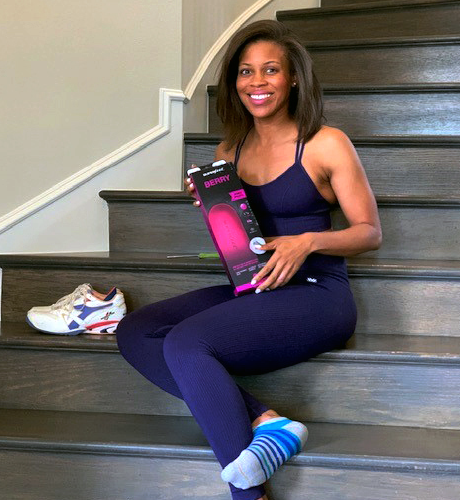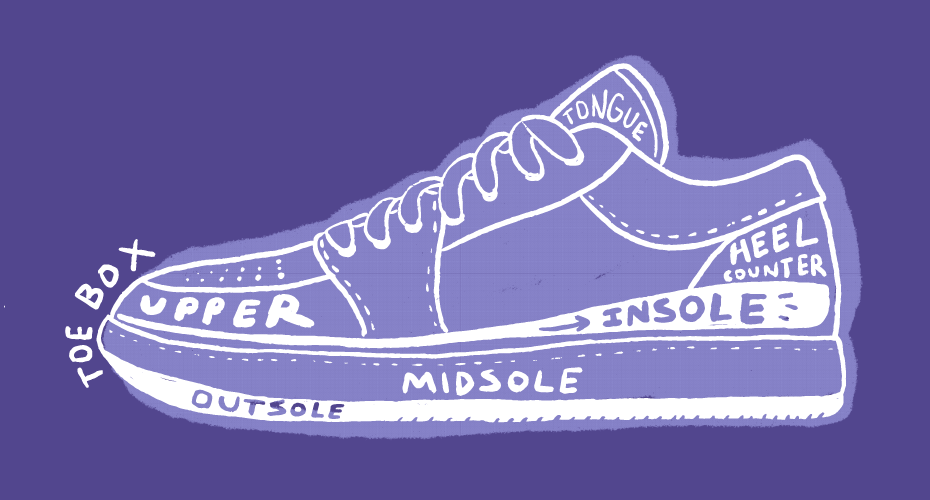
Written by: Dr. Chanel Perkins. Dr. Chanel Perkins is an innovator in the field of Podiatric medicine. In a speciality traditionally underrepresented by minorities and women, she is changing the face of healthcare in her role as a double-board certified Podiatric Physician and Surgeon. Dr. Perkins is also a fitness + wellness advocate, wife, and mother of four, who still finds time to educate the masses on foot health while being an inspiration to others through her social media platform. Follow her on Instagram at @fabfootdoc.




What’s the first thing that comes to your mind when you think of the word anatomy?
You are probably conditioned to think of the human body or all things medical. You might even automatically associate the name “Gray’s” or “Grey’s,” depending on if you’re referencing the actual medical textbook Gray’s Anatomy, or the primetime television medical drama, Grey’s Anatomy.
But here’s the interesting thing: the term anatomy can extend well beyond a medical context. You can deconstruct any object and study its anatomy or make-up.
Now, I know many people would not normally correlate their shoes with the term anatomy, but that’s where I come in! I’m here to talk about a topic not familiar to many, even those well-versed in medical anatomy: The Anatomy of a Shoe.
I’ll even take it a step further (pun fully intended) to let you know if your chosen shoes could hurt your feet and cause more harm than good.
Why does Shoe Anatomy Matter?
Understanding your shoe’s anatomy is important for several reasons.
Knowing the basic parts of a shoe can help you select the right pair when shoe shopping, especially if you understand the needs of your feet and your activity level.
Choosing the right pair of shoes can even help prevent foot injuries. The basis of many modern-day foot problems is ill-fitting or poorly-chosen footwear. That’s right — the very shoes we slip into everyday can be damaging to our feet, if we’re not careful. It is so important to find good shoes that are designed around foot anatomy and function. You do that by first understanding the anatomy and function of a shoe.
The Basic Parts of a Shoe


Let’s get down to business. The basic parts of a shoe are: the toe box, the upper, the sole, the heel, the waist, the shank and the welt.
Toe Box
The toe box is the area that houses the toes with complete coverage, located in the front end of the shoe. The toe box helps give a shoe its structure. It can be round, square, or pointed. It’s best if this area is wide enough to allow for wiggle room for the toes.
Upper
The upper is the main part of the shoe that covers the top of the entire foot. The upper consists of the heel counter, vamp, tongue, eyelets, quarters, lining, throat and puff.
Sole
The sole is the bottom portion of the shoe and must be durable. The sole can be made of natural rubber, leather, polyurethane and PVC compounds. It is made up of three parts: insole, midsole and outsole. The innermost portion is the insole. The insole is the footbed of the shoe and cradles the foot. The midsole is located just as it’s name implies, in the mid portion of the sole, between the insole and outsole. In athletic shoes, this part offers shock absorption and cushioning. Finally, the outsole is the part of the sole that makes contact with the ground. It must have a good waterproof grip that provides for friction between the shoe and the ground.
Shoe Anatomy — Identifying Potential Issues
In the human body, all anatomical parts must function together for optimal health. The same is true for shoe anatomy and foot health. Many foot problems may arise from wearing wrong or ill-fitting shoes.
For instance, if the toe box is too narrow, there can be excessive friction contributing to blisters, corns and/or callouses. While the biomechanics of your foot better adapt to a roomy toe boxy since toes splay when impacting the ground, similar issues may be encountered if the toe box is too roomy. A proper-fitting toe box allows us to avoid bunions, hammertoes and a host of other problems.
If the heel counter of a shoe is too tight, there could be irritation at the Achilles tendon insertion.
The wear pattern on the outsole can also help you understand how to select the best shoes, especially when it comes to selecting shoes for durability. If you pronate more during your gait, you will see a medial wear pattern on the outsole. If your foot supinates more, the sole wear pattern is lateral.
Shoe Shopping Tips
Choosing the right shoe can keep feet healthy, happy and safe from injury.
Shoes should cushion and support the feet. Make sure shoes fit comfortably – not too small, not too snug. The best time of day to shop for footwear is at the end of the day, or after exercise — that will help you determine your true shoe size. Even then, it is important to get your feet properly measured, and understand that shoe sizes can vary greatly across brands.
Be sure to also select your shoes based on activity. Running shoes differ from walking shoes, so choose accordingly. Choosing activity-specific footwear is important for overall foot health. You will also want to properly break in new shoes before any prolonged wear.
Finally, if you need to add aftermarket insoles to your shoe, also select insoles based on your shoe and activity. Some shoes are only as good as their insoles!






